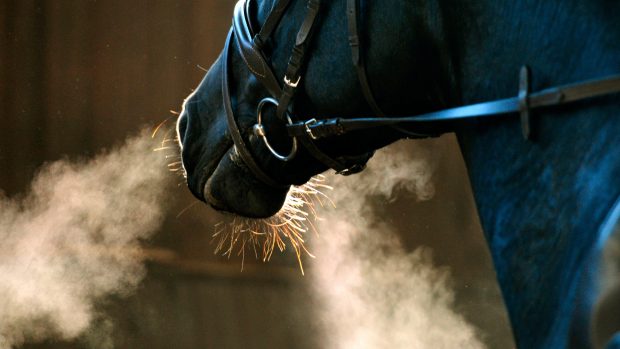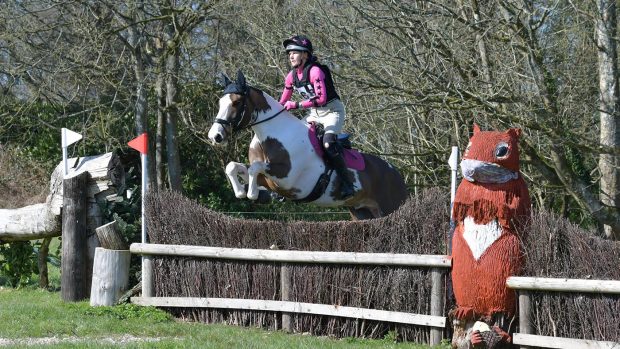Every four years, scientists and vets interested in sport horses discuss innovations in medicine and exercise physiology.
Since the first conference in 1982, there have been huge advances in our understanding of the physiology of the sport horse, and how it can be trained to produce the best performance, which has led to the co-operation that brought the changes to the Olympic equestrian events in Atlanta.
All the world’s leading equine sports scientists were present – 250 delegates from 17 countries – at the most recent conference in Utsonomya, north of Tokyo, home of the Japanese Racing Association’s new equine research institute.
The conference guaranteed not only lively debate, but also plenty of controversy. The most interesting topics covered were:
Microscopic bleeding
That performance horses can bleed from the nostrils is not news, neither is the fact that the haemorrhage originates in the lung. However, that microscopic evidence of recent lung haemorrhage is present in all racehorses in training is less well known.
“Bleeding” or exercise-induced pulmonary haemorrhage is not restricted to the racing Thoroughbred and occurs in horses in all sporting disciplines. However, although research is being carried out, the actual cause remains elusive.
One new theory on the cause of bleeding suggested that damage occurs because of forces generated by the impact of the front legs on the chest wall. This controversial theory, yet to be proven, explains why bleeding always starts in the upper back part of the lung.
Treatment of bleeding was also discussed, highlighting the differences between procedures in North America and the UK. Figures showed that 75% of horses in major US stakes races competed on frusemide, a drug believed to reduce bleeding and enhance performance.
The drug, which reduces body water, is banned during racing under UK regulations, although it is used during training. Despite all the research and the drug’s extensive use, there is still no real evidence to suggest the drug actually reduces lung bleeding.
Further confusion and discussion has arisen from work carried out in the UK where it is found that little evidence that bleeding detected after racing was associated with poor performance.
Gurgling DORSAL displacement of the soft palate, or “gurgling”, may be associated with upper respiratory tract inflammation or infection. Researchers have reproduced the effect by anaesthetising nerves that supply various throat muscles. They blocked different nerves, but the only one that caused actual displacement of the palate was a nerve that runs through the guttural pouches.
Most interesting, though, was the position of the nerve relative to the main group of lymph nodes in the throat. These lymph nodes are usually enlarged and inflamed with respiratory infections, which we know are so common in young performance horses.
Dorsal displacement of the palate is the most common condition diagnosed on our treadmill at the Animal Health Trust and is often the cause of poor performance and/or respiratory noise. We may have a possible explanation for this frustrating condition which plagues so many equine athletes.
>Breathing lessons
Researchers at the Animal Health Trust had looked at the effects of training on the heart and respiratory systems in Thoroughbreds. Interestingly, there was no effect of training on the efficiency of breathing, despite improvements in performance and the ability to deliver oxygen to the working muscles.
So, it seems that, just as in human athletes, it is the changes occurring in the heart and muscles that makes a horse ?fit?. In otherwords, horses have to put up with the lungs with which they were born. The major task of the trainer or rider is to keep the lungs healthy while the heart, muscles and bones adapt around them.
Stress fractures
Complex microscopic studies of the bones of trained and untrained horses showed why stress fractures of the cannon bone occur in a characteristic place starting at the fetlock joint and moving up the bone.
Similar effects were also demonstrated in the bones of the knee, explaining the origin of fractures within the knee joint. Studies from the USA demonstrated that normal development of bones was decreased in young horses housed in stables compared with those at pasture, illustrating the importance of exerciseas the best way to prepare the skeleton for work.
Posing questions
Initially, it seems that the conference asked questions without giving any answers. However, a gradual process of refinement and further investigations will need to take place before the answers begin to appear. Then, once fully tested and established, the new theories and strategies will filter down to horse and rider.
Bleeding noses
Exercise induced pulmonary haemorrhage (EIPH) is a well-recognised phenomenon in performance horses, writes Karen Coumbe MRCVS. It can be an obvious cause for concern when a nosebleed is seen. Despite blood being apparent at the nose, the site of the initial bleed is deep in the back of the lungs. It is thought that there is some bleeding into the lungs during exercise in almost every horse.
Fast work
Epistatxis (the presence of blood at the nostrils) occurs in up to 5% of racehorses after galloping. If a vet examines thetrachea (windpipe) using an endoscope, there will be some evidence of bleeding in up to 60% of horses. If sample cells are collected from inside the windpipe of horses in training and examined under a microscope, nearly 100% will show evidence of blood breakdown products. This blood usually comes from the lungs and is probably universal among racehorses undergoing fast work.
Is bleeding serious?
Most horses with a mild bleed show no obvious clinical signs that there is anything wrong. In a small number of cases, there may be a dramatic bleed at or towards the end of a race. Occasionally, a massive bleed from the lungs occurs that can be fatal.
The effect of a mild bleed on racing performance is variable, and inmost horses it is minimal. In some cases, there may be reduced exercise tolerance, sometimes to the point that the horse pulls up during a race. In such cases, the horse may appear distressed, breathless, start to cough and swallow repeatedly to clear the blood in their throat.
Certain horses may continue to bleed in their lungs for days or weeks after racing. These horses tend to be dull and lethargic and may become anaemic through the blood loss.



